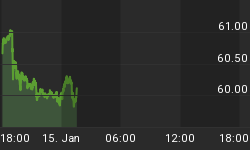No one can predict where the stock market is headed, but there are numerous sound methods to make probabilistic forecasts. At CCM, we have two market models, the Bull Market Sustainability Index (BMSI) and the 80-20 Correction Index. Both models currently have readings that align with the early stages of past bear markets (2000 & 2007). Both models tell us the odds favor lower lows in stocks, rather than higher highs. As we outline below, the asset class winners and losers on Monday, October 3 also favor bearish outcomes.
Given the technical and fundamental backdrop, we noted a defensive bias was prudent on August 3, when the S&P 500 closed at 1,260; the close on Monday was 1,099. Since we outlined ominous present day parallels to 2000/2008 on August 12, the similarities have become even more pronounced. The most concerning development in the last two weeks has been the market's shift to a deflationary bias. In a September 11 article, we presented the table below and stated the markets may be entering a deflationary phase similar to what occurred in the period August-November 2008.

On October 3, when stocks were hit hard, the short list of winners included an S&P 500 short (SH), the U.S. dollar (UUP), and Treasuries (TLT), which aligns well with the deflationary period in 2008 (compare the table above to the table below). Just as they were hit hard in 2008, consumer staples (XLP), utilities (XLP), and emerging markets (EEM) took big hits on October 3.

The important takeaway from the table above is the conviction of buyers and sellers on October 3. Both S&P 500 shorts and the dollar gained on roughly 2.5 times their average daily trading volume, which shows a strong desire to own these assets. The strong desire to get out of consumer staples, utilities, and emerging markets was evident in their way-above-average trading volume on October 3. Gold (GLD) and silver (SLV) both lost money during the deflationary period in 2008 (see "If Dollar Continues to Rally" table above). While gold and silver posted impressive gains on October 3, their trading volume was well below average, which means buyers lacked strong conviction to own precious metals. The moral of the story is Monday's trading session had a distinct deflationary bias, which is bearish for stocks and commodities.
On August 22 we penned Dip Buyers Beware: Odds Favor Lower Lows In Stocks, based on a probabilistic forecast. The article postulated the early August S&P 500 intraday low of 1,101 and the closing low of 1,118 would both be exceeded in a bearish manner. Monday we closed below both levels. The concerns we had on August 22 still apply to the market, which means the odds continue to favor lower lows in stocks. During bear markets we should expect strong countertrend rallies, but the longer-term bias remains to the downside. As outlined on September 22, the 22 reasons the S&P 500 is headed below 1,050 remain valid. Consequently, we will continue to hold shorts (SH), the dollar (UUP), and Treasuries (TLT) until the odds of higher highs in stocks become more favorable.
If you do not have a detailed plan in place to protect your investment portfolio, now is the time to take action; not in two days, not in two weeks, not in two months - now. If the markets defy the odds and find their footing, you can throw away your defensive contingency plans. If the markets follow the path of least resistance, which is down, those plans may help you sleep better in the months ahead. It cannot hurt to do some "what if the S&P 500 drops below 1,000" planning.
















